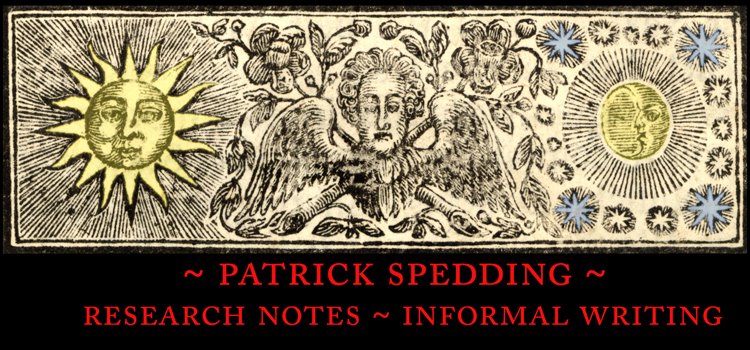I have been curious concerning the presence of Private Case items on ECCO for a while. In my 2011 article “‘The New Machine’: Discovering the limits of ECCO” I mentioned that little of the Private Case material was on ECCO and that the material that had been included at the time of writing had only recently been added (ibid., 441). The main evidence I had to go on was that no Private Case items appear in the first eight thousand reels of the Eighteenth Century microfilm series (the basis of ECCO), and few had appeared thereafter (ibid., 451–52n37). (The first one appears to have been Thomas Stretser's New Description of Merryland, 4th ed. (1741); ESTC: t139065, which appeared on reel 8284 in 1986.)
I recently updated all the information in my Bibliography of Eliza Haywood about items on the Eighteenth Century microfilm series for a forthcoming essay (“The availability of Haywood’s works, editing and issues of bibliography”). And I have also now updated my Checklist of Eighteenth-Century Erotica, using the information from Kearney. I used the updated information about the Haywood corpus as a benchmark for the eighteenth-century works in English either in, or previously in, the Private Case.
My (long) experience using ECCO suggests that Haywood is pretty representative of British Library holdings in general: i.e., that close to three-quarters of all Haywood items on ECCO are sourced from the British Library, and almost everything at the British Library is on ECCO. These proportions seem to be true generally of British Library holdings on ESTC and ECCO.
As I explain below, when I compared the British Library’s holdings of Haywood items with past and present Private Case items, I discovered that, while a similar percentage of Haywood items are on ESTC as are, or were, in the Private Case, it is still the case that, whereas 95% of all Haywood items held in the British Library are on ECCO, less than half of all material that is or was in the Private Case has now been reproduced on ECCO.
That there is little difference between the presence on ECCO of items presently in, versus those once in, the Private Case, suggests that items are not being withheld from ECCO due to access restrictions on the Private Case pressmark. I doubt very much that the material once or now in the Private Case is in significantly worse condition that the many heavily-worn Haywood items I have examined. Consequently, it would seem that the previous and present Private Case items are only being withheld because of the nature of their contents; i.e., because they are works of erotica.
* * * * *
Of the 149 eighteenth-century works in English, recorded by Kearney as being, or having been, held in the British Library’s Private Case, ten are not recorded on ESTC at all (6.7%), a dozen more are not listed as holdings in the relevant ESTC entry (15%), a further forty-nine that are on ESTC, are not reproduced on ECCO and another eleven, which are on ECCO, reproduce copies other than that in the Private Case. Of the seventy-eight items on ECCO (52%), thirty-four are definitely, and thirty-three are probably, sourced from the British Library (45%); “probably” because these items are not identifiable on ECCO by visible pressmarks.
Looking just at the fifty-four eighteenth-century works in English presently in the British Library’s Private Case, three are not recorded on ESTC at all (5.6%), twenty-five that are on ESTC are not reproduced on ECCO (46%) and another four, which are on ECCO, reproduce copies other than that in the Private Case. Of the twenty-nine items on ECCO (54%), seventeen are definitely, and eight are probably, sourced from the British Library.
The data I have on Haywood items is not in a form that facilitates detailed comparison. However, fifteen of the 273 eighteenth-century works in English, which I record in my Bibliography of Eliza Haywood, are not recorded on ESTC at all (5.5%); and of the 180 Haywood items that are reproduced on ECCO, 128 (or 71%) are sourced from the British Library. Fifty-two Haywood items on ECCO are sourced from other libraries (29%), but in only seven of these cases does the British Library also hold the item concerned (5%).
What this means is that a similar percentage of either present (5.6%), or present and previous, Private Case items (6.7%), than Haywood items (5.5%), are missing from ESTC completely; a somewhat lower percentage of present and previous (45%), or present Private Case items (54%), that Haywood items (66%) are on ECCO; but a hugely-higher percentage of either present (54%), or present and previous, Private Case (55%), than Haywood items (5%), which are held by the British Library, are not on ECCO. An item once in, or presently in, the Private Case is over ten times as likely to not appear on ECCO, as a Haywood item.
* * * * *
I will save my data on Kearney for another time, but regarding the Haywood items on the Eighteenth Century microfilm series—and, therefore, on ECCO—128 items are British Library copies. The remaining are from the following libraries: the Bodleian (16), Houghton (9), Huntington (6), National Library of Ireland (6), Clark (5), Boston Public (4), Cambridge (3), and one each from the National Library of Wales, National Library of Scotland, and the Spencer Library.


No comments:
Post a Comment